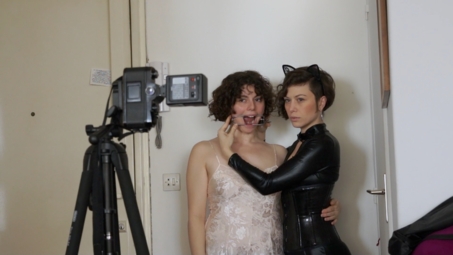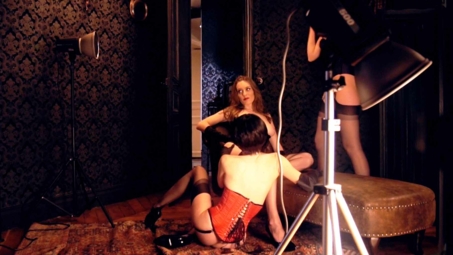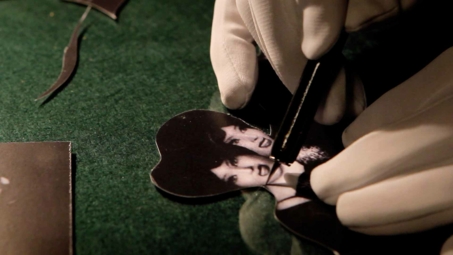Locked Rooms
In general, things start in a room. This is certainly true of the birth of photography. When Nicephore Niepce made his first attempts to capture an image, revealing to the world the famous view "from my window", the light must have crossed the room then the camera obscura.
As early as 1853, in France, there were 'not-for-public-display nudes': posed photographs tolerated by the chief of police, serving as academic studies for artists.
But these photographs were often faintly erotic, and intentionally so; the look in the model's eyes or their ambiguous smile would be suggestive. Such complicity proves that these images, sold under the counter, were not really produced for artists as substitutes for live models.
The representation of eroticism has evolved through artistic exploration. But its encounter with photography was decisive: not completely revealed, not completely concealed, it plays on the edge of what can be glimpsed behind the veil, on the ground glass, through lace, in these spaces where more is perceived than seen: eroticism is not synonymous with pornography.
Because pornographic photography has been around since the start too but, paradoxically, by "showing everything", it bypasses the desire, the expectation, the aesthetic and the intellectual construction peculiar to eroticism, this sophistication requiring the gazer to play along and be drawn as much to the image itself as to the photographed body.
The "object of desire" fetish image, which replaces the body itself, undoubtedly reached its peak with the work of Pierre Molinier. He did without models, or rather used himself, to produce photomontages and create surrealistic bodies. Kaleidoscopes of multiple legs and thighs, objects of his own fantasies, form compositions of an unsettling beauty.
While Frédéric Fontenoy explores a very Dadaist tension through the disturbing eroticism of his mises en scene. At the crossroads of Surrealism and the roman noir, he echoes the gaze of Man Ray, of Bill Brandt for his nudes… and also of Weegee for his crime scenes.
Long thought to be the preserve of men, eroticism in photography now belongs to every gender and sex. There are photographic eroticisms, and each refers to different codes. Because codes and conventions are used: those of lace, of the muted bourgeois world, often evoke turn-of-the-century bordellos and their regulated permissiveness. For others, it is the conventions of submission, of leather, of the dominated body. For others still, those of the veil, of the ethereal, of the enhanced body.
Artists have managed to completely transcend the life-drive of desire at play with forms, staging, composition… photographic distancing: for this tension of the gaze to exist, there must be boundaries: "Look but don't touch!" (…and fortunately too, because there is no place today for violence towards the other under the guise of creativity.)
E.B.
Translated from French by Susannah Rooke





